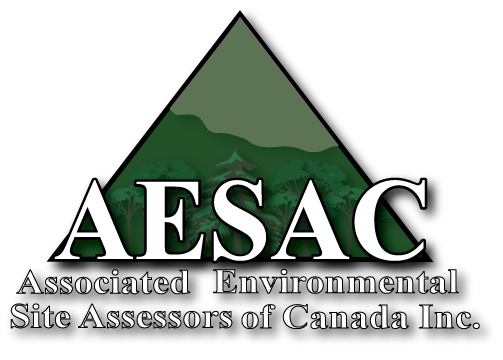AESAC will be at the 2017 Canadian Environmental Conference and Tradeshow (CANECT) taking place May 1 – 3, 2017 at the International Centre, in Mississauga, Ontario. Please drop by the AESAC booth and say hello. For more information and free tradeshow admission, go to www.canect.net
AESAC – Spring ESA Training Course Schedule
The Associated Environmental Site Assessors of Canada (AESAC) is offering Environmental Site Assessment training courses in Alberta, Ontario, and Nova Scotia this spring (2017). Courses are offered over intense 3-day and 2-day sessions to minimize on time and expense. Completion of the following courses will allow attendees to apply for the accredited designation of Certified Environmental Site Assessor (CESA) and/or CESA II.
Phase I (One) Environmental Site Assessment Certification Course:
Calgary, Alberta: March 28 – 30, 2017
Toronto, Ontario: May 4 – 6, 2017
Halifax, Nova Scotia: May 16 – 18, 2017
Phase II (Two) Environmental Site Assessment Certification Course:
Calgary, Alberta: April 25 – 27, 2017
Toronto, Ontario: May 25 – 27, 2017
Spaces are limited! Call to register now: 877-512- 3722
or click here to be taken to the Online Registration Form
Data Overload – Part 2

In my last article I discussed some of the research requirements for conducting a Phase 1 Environmental Site Assessment (ESA), in particular the use of environmental databases to confirm the history and development of a particular property, and to assist in determining potential environmental concerns that may impact the Site. One of the research tools I employ for every Phase 1 ESA I undertake is an environmental database report from Environmental Risk Information Services (ERIS). Continue reading “Data Overload – Part 2”
Data Overload – Part 1

One of the most important tasks for any consultant working on a Phase 1 Environmental Site Assessment (ESA) is the research component. The primary purpose of the ESA is to determine actual or potential sources of environmental concern that may be associated with the subject Site, as well as surrounding and nearby properties; which typically involves looking at a lot of environmental databases. Sufficient relevant data must be reviewed to confirm the site and area history, to assess current and historical activities, and to use this data to evaluate potential environmental issues. Continue reading “Data Overload – Part 1”
Writing a Better Phase One ESA

In one of my last posts I wrote about some common pitfalls encountered when conducting a Phase One Environmental Site Assessment (ESA). This article will discuss some of the inherent difficulties in interpreting and reporting the ESA findings. Although my comments are directed mainly to ESA practitioners, I hope they will also be useful for the end users of these reports. Continue reading “Writing a Better Phase One ESA”



